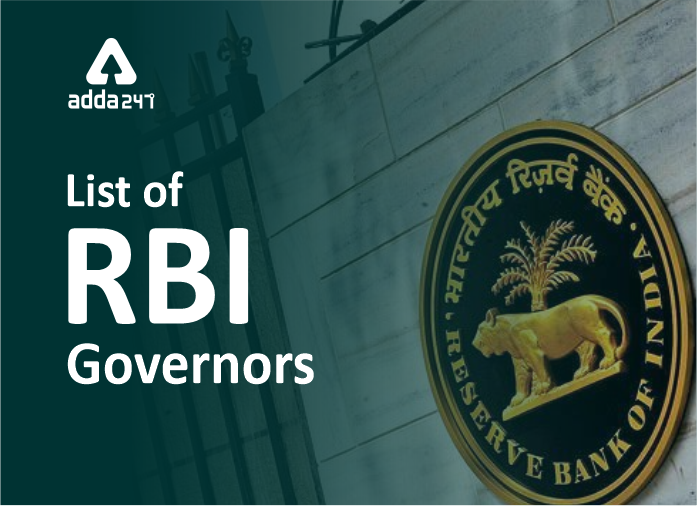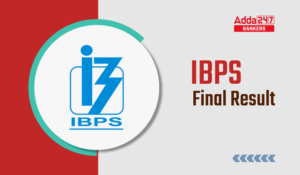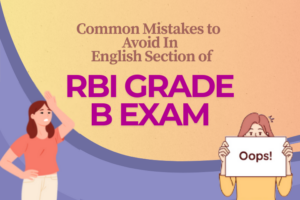Table of Contents
List of Governors of Reserve Bank of India (RBI)- The Reserve Bank of India is India’s central bank and a regulatory body responsible to regulate the banking system of our country. The highest position in the Reserve Bank of India is the post of RBI Governor. The Current RBI Governor is Shaktikanta Das and is the 25th RBI Governor of India. He was appointed on 12 Dec 2018. The first Governor of RBI was Sir. Osborn Smith who was a British Banker who was appointed in 1935 when the Reserve Bank of India was established. The third governor of RBI was an Indian, Sir. C.D. Deshmukh who was appointed in 1943 for the next 5 years. The government of India appoints the Governor of RBI for a fixed time period of 5 years. The Indian currency notes are signed by the governor of India except a one rupee note which is signed by the finance secretary of India. To know more about the Governors of India and what are their responsibilities, read the complete article and boost up your general knowledge for the competitive exams. Check the complete list of 25 RBI Governors from 1935 to 2022.
Since its establishment in 1935 by the British colonial government, the RBI has been headed by 25 governors so far. In this article, we will be discussing everything related to RBI governor like roles and responsibilities, How a governor is appointed and also facts related to RBI governors. The position is currently held by Shaktikanta Das, who took over from Urijit Patel. Students who are preparing for banking exams are advised to go through this list as questions can be asked in the GA section from this as well and this list will be helpful for you in your interview preparation also.
How the Governor of RBI is Appointed?
Government of India appoints the RBI Governor. According to the Official website of the Reserve Bank of India rbi.org.in “The Reserve Bank’s affairs are governed by a central board of directors. The board is appointed by the Government of India in keeping with the Reserve Bank of India Act.”
Role And Responsibility Of RBI Governor
One of the most important functions of the RBI governor is in formulating policies that can enable him to make a positive impact on the economy of India. Given below are some of the important responsibilities that the RBI governor takes into account:
- The RBI governor holds the responsibility to administer and monitor currency issuance in the country.
- RBI governor also holds the responsibility to issue licenses for the purpose of opening new private banks and foreign banks in India.
- One of the major responsibilities of the RBI governor is to ensure that certain policies announced by the government are timely implemented and reach the needy section of the society.
- The RBI governor holds a major say overprescribing the interest rates on deposits/advance/ savings accounts in India and a minimum lending rate.
- The RBI governor also holds the responsibility for regulating and administering the Indian financial system. Even a single rupee cannot be moved out of the RBI without the permission of the governor of RBI.
- The RBI governor is accountable for promoting orderly development and maintenance of foreign exchange in India. He is also accountable for managing FEMA (Foreign Exchange Management Act) 1999which is an act to facilitate external trade and payment in India.
- The RBI governor monitors the new currency issue as well as the destruction of coins and currency which are unfit for public use.
- The RBI governor is not only responsible to monitor and ensure that the currency circulating in the Indian market is adequate in quantity but also the quality and fit for use by the general public.
- He plays a major key role when it comes to supporting functions so that national objectives can be achieved.
- The RBI governor also holds the responsibility for framing policies for the priority sector and supporting the agriculture banks.
- The RBI governor regulates the regional rural banks, state co-operative banks, and various local area banks.
| Name of the Governor | Tenure |
| 1. Sir Osborne Smith | 1st Jan 1935 to 30th June 1937 |
| 2. Sir James Taylor | 1st July 1937 to 17th Feb 1943 |
| 3. Sir C D Deshmukh | 11th Aug 1943 to 30th June 1949 |
| 4. Sir Benegal Rama Rau | 1st July 1949 to 14th Jan 1957 |
| 5. K G Ambegaonkar | 14th Jan 1957 to 28th Feb 1957 |
| 6. H V R Iengar | 1st March 1957 to 28th Feb 1962 |
| 7. P C Bhattacharya | 1st March 1962 to 30th Sept 1967 |
| 8. L K Jha | 1st July 1967 to 3rd May 1970 |
| 9. B N Adarkar | 4th May 1970 to 15th June 1970 |
| 10. S Jagannathan | 16th June 1970 to 19th May 1975 |
| 11. N C Sen Gupta | 19th May 1975 to 19th Aug 1975 |
| 12. K R Puri | 20th Aug 1975 to 2nd May 1977 |
| 13. M Narasimham | 2nd May 1977 to 30th Nov 1977 |
| 14. Dr. I G Patel | 1st Dec 1977 to 15th Sept 1982 |
| 15. Dr. Manmohan Singh | 16th Sept 1982 to 14th Jan 1985 |
| 16. A Ghosh | 15th Jan 1985 to 4th Feb 1985 |
| 17. R N Malhotra | 4th Feb 1985 to 22nd Dec 1990 |
| 18. Venkitaramanan | 22nd Dec 1990 to 21st Dec 1992 |
| 19. Dr. C Rangarajan | 22nd Dec 1992 to 21st Nov 1997 |
| 20. Dr. Bimal Jalan | 22nd Nov 1997 to 6th Sept 2003 |
| 21. Dr. Y V Reddy | 6th Sept 2003 to 5th Sept 2008 |
| 22. Dr. D. Subbarao | 5th Sept 2008 to 4th Sept 2013 |
| 23. Dr. Raghuram Rajan | 4th Sept 2013 to 4th Sept 2016 |
| 24. Dr. Urjit R. Patel | 4th Sept 2016 to 11th Dec 2018 |
| 25. Shaktikanta Das | 12 Dec 2018 to date |
Sir Osborne Smith – 1st Jan 1935 to 30th June 1937
Sir Osborne Smith, a professional banker was the first Governor of the Reserve Bank. Before coming to India he had more than 30 years of experience in the banking sector as he served for over 20 years with the Bank of New South Wales & 10 years with the Commonwealth Bank of Australia. In India, he was given the position of the Managing Governor of the Imperial Bank of India in 1926.
| How to Master Reading Comprehension to Score Maximum Marks? | Importance of Spoken English and How to Improve it? | SBI PO Prelims Study Plan 2020 |
Sir James Taylor – 1st July 1937 to 17th Feb 1943
Sir James Braid Taylor held the positions of Deputy Controller, later as Controller of the Currency and secretary in the Finance Department before becoming the second governer.
He was known to be closely associated with the preparation and piloting of the Reserve Bank of India Bill also the decision to break away from silver currency to fiat money.
Sir C D Deshmukh – 11th Aug 1943 to 30th June 1949
Chintaman Dwarkanath Deshmukh was the First Indian Governor of RBI. He was also a member of the Indian Civil Service. As per the information on RBI’s website “During his tenure as Governor, he represented India at the Bretton Woods negotiations in 1944, saw the transition to Independence and the partition of the country and the division of the assets and liabilities of the Reserve Bank between India and Pakistan.”
Sir Benegal Rama Rau – 1st July 1949 to 14th Jan 1957
Sir Benegal Rama Rau is known to be the longest serving Governor of the Bank. He also served as the Indian Ambassador to the United States.
K G Ambegaonkar – 14th Jan 1957 to 28th Feb 1957
Before being appointed as Governor K G Ambegaonkar served as Finance Secretary and was also a member of the Indian Civil Services. He is known to have forged closer connections amongst many agricultural enterprises and RBI’s operations. KG Ambegaonkar did not sign any banknotes.
H V R Iengar – 1st March 1957 to 28th Feb 1962
H V R Iengar also served as the Chairman of the State Bank of India for a brief period before being appointed as the Governor of the Reserve Bank. During his tenure deposit Insurance for bank deposits was introduced in 1962 which made India as one of the earliest countries to experiment with Deposit Insurance. In aspect of monetary policy, the variable cash reserve ratio was used for the first time as were the selective credit controls.
P C Bhattacharya – 1st March 1962 to 30th Sept 1967
He was a member of the Indian Audit and Account Service, served as Secretary- Finance Ministry. He was also later appointed as Chairman of the State Bank of India. After serving in these roles he became the Governor of RBI. Some of the developments that took place in his tenure included the introduction of the Credit Authorisation Scheme as an instrument of Credit Regulation, the devaluation of the Rupee in 1966, with a package of measures including import liberalization and elimination of export subsidies.
L K Jha – 1st July 1967 to 3rd May 1970
L K Jha before becoming the Governor of RBI was Secretary to the Prime Minister. In his tenure social controls over commercial banks were introduced. 14 major commercial banks were nationalised in 1969, a step which did not have the endorsement of the Reserve Bank.
B N Adarkar – 4th May 1970 to 15th June 1970
B N Adarkar was a professional economist and held the post of Governor during the interregnum till S Jagannathan could take over for the post. He served as Economic Adviser of the Government of India and also held important positions in the Ministry of Commerce & Industry.
S Jagannathan – 16th June 1970 to 19th May 1975
S Jagannathan served with the Central Government and thereafter as India’s Executive Director at the World Bank before being appointed as the Governor in the Reserve Bank of India. Later on he became the Indian Executive Director at the IMF.
N C Sen Gupta – 19th May 1975 to 19th Aug 1975
N C Sen Gupta was appointed Governor for three months till K R Puri could assume office. He was earlier working as Secretary to the Department of Banking of the Ministry of Finance.
K R Puri – 20th Aug 1975 to 2nd May 1977
During the tenure of K R Puri the RRBs- Regional Rural Banks were set up. Prior to his appointment as the Governor in RBI he served as the Chairman and Managing Director of the Life Insurance Corporation of India
M Narasimham – 2nd May 1977 to 30th Nov 1977
As per the RBI’s website “M Narasimham was the first and so far the only Governor to be appointed from the Reserve Bank cadre, having joined the Bank as a Research Officer in the Economic Department. He later joined the Government and prior to his appointment as Governor he served as Additional Secretary, Department of Economic Affairs.”
Dr. I G Patel – 1st Dec 1977 to 15th Sept 1982
Dr. I G Patel joined the RBI as Governor after serving as Secretary in the Ministry of Finance and thereafter at the United Nations Development Programme. During his tenure six private sector banks were nationalised, targets for priority sector lending introduced, and the Deposit Insurance and Credit Guarantee Corporations were merged, and a Departmental reorganisation was undertaken in the Bank.
Dr. I G Patel is known to have played an active role in availing of the IMF’s Extended Fund Facility in 1981 which represented the largest arrangement in IMF’s history at the time.
Dr. Manmohan Singh – 16th Sept 1982 to 14th Jan 1985
Dr Manmohan Singh served as Secretary Finance as well as Member Secretary of the Planning Commission prior to his appointment as Governor. His tenure saw new introductions to the Reserve Bank of India Act and the Urban Banks Department was set up.
A Ghosh – 15th Jan 1985 to 4th Feb 1985
A Ghosh was appointed as the Governor for a brief period of 15 days till R N Malhotra could take over. He was the Deputy Governor of RBI.
R N Malhotra – 4th Feb 1985 to 22nd Dec 1990
R.N. Malhotra was member of the Indian Administrative Service before joining the RBI as Governor, he was Secretary, Finance and Executive Director of the IMF.
| UPSC EPFO Preparation Strategy- Know How to Crack the 2020 Recruitment Test | UPSC EPFO Enforcement Officer previous Year Paper | Book list for UPSC EPFO 2020 exam! |
Venkitaramanan – 22nd Dec 1990 to 21st Dec 1992
S Venkitaramanan served as Finance Secretary and adviser to the Government of Karnataka prior to his appointment as Governor. His term is known for India adopting the IMF’s stabilization program where the Rupee underwent a devaluation and the launch of the program of economic reforms.
Dr. C Rangarajan – 22nd Dec 1992 to 21st Nov 1997
Dr. C Rangarajan served as the Deputy Governor for over a decade before becoming the Governor of RBI. He was also a member of the Planning Commission and a member of the Tenth Finance Commission. As per the Official RBI website- “New institutions and instruments were introduced and changes in exchange rate management culminated in the establishment of a unified exchange rate. In the field of monetary policy, his tenure saw the historic memorandum signed between the Bank and the Government whereby a cap was put on the automatic finance by the Bank to the Government in the form of ad hoc treasury bills.”
Dr. Bimal Jalan – 22nd Nov 1997 to 6th Sept 2003
Before becoming the Governor of the Reserve Bank of India Dr. Bimal Jalan was Chief Economic Advisor to Government of India, Banking Secretary, Finance Secretary, Member Secretary of Planning Commission, and Chairman of the Economic Advisory Council to the Prime Minister prior to being appointed as Governor. His tenure is known for strengthning of the balance of payments and forex position,low inflation and soft interest rates.
Dr. Y V Reddy – 6th Sept 2003 to 5th Sept 2008
Dr. Yaga Venugopal Reddy served as Secretary (Banking) in Ministry of Finance, Additional Secretary, Ministry of Commerce, Joint Secretary in Ministry of Finance in Government of India, Principal Secretary, Government of Andhra Pradesh and had a a six year tenure as Deputy Governor of the Reserve Bank of India.
Dr. D. Subbarao – 5th Sept 2008 to 4th Sept 2013
Dr. D. Subbarao served as Finance Secretary in the Ministry of Finance, Government of India before becoming the Governor of RBI in 2008. Dr. Subbarao has earlier been Secretary to the Prime Minister’s Economic Advisory Council (2005-2007), lead economist in the World Bank (1999-2004), Finance Secretary to the Government of Andhra Pradesh (1993-98) and Joint Secretary in the Department of Economic Affairs, Ministry of Finance, Government of India (1988-1993).
Dr. Raghuram Rajan – 4th Sept 2013 to 4th Sept 2016
Dr. Raghuram Rajan was the 23rd Governor of the Reserve Bank of India and before this he served as Chief Economic Advisor, Ministry of Finance, Government of India and the Eric J. Gleacher Distinguished Service Professor of Finance at the University of Chicago’s Booth School. Between 2003 and 2006, Dr. Rajan was the Chief Economist and Director of Research at the International Monetary Fund. Following are Books written by him:
- co-authored Saving Capitalism from the Capitalists with Luigi Zingales
- Fault Lines: How Hidden Fractures Still Threaten the World Economy, for which he was awarded the Financial Times-Goldman Sachs prize for best business book in 2010.
Dr. Urjit R. Patel – 4th Sept 2016 to 11th Dec 2018
Dr. Urjit R. Patel served as Deputy Governor before becoming the Governor of RBI. He also worked with several central and state government high level committees, including the Task Force on Direct Taxes (Kelkar Committee), the High Level Expert Group for Reviewing the Civil & Defence Services Pension System, the Prime Minister’s Task Force on Infrastructure, the Group of Ministers on Telecom Matters, the Committee on Civil Aviation Reforms and the Ministry of Power’s Expert Group on State Electricity Boards.
Also read; How To Tackle The Unemployment Challenge In India?-Decreasing Bank Vacancies
Shaktikanta Das – 12 Dec 2018 to date
Shri Shaktikanta Das is retired IAS former Secretary, Department of Revenue and Department of Economic Affairs, Ministry of Finance, Government of India assumed charge as the 25th Governor of the Reserve Bank of India effective December 12, 2018. Immediately prior to his current assignment, he was acting as a Member, 15th Finance Commission, and G20 Sherpa of India. He has represented India in international fora like the IMF, G20, BRICS, SAARC, etc.
Facts Related to RBI Governors:
1. Governor of the Reserve Bank of India who worked for the longest time (total of 7 years, 197 days) was Benegal Rama Rao. He was the head of RBI from July 1, 1949 to January 14, 1957.
2. The Governor of the Reserve Bank of India who worked for the shortest time was Amitabh Ghosh. He was head of RBI for 20 days from 15 January 1985 to 4 February 1985.
3. RBI is not a Commercial Bank unlike other banks in the country.
4. Manmohan Singh is the only Prime Minister who was the Governor of RBI (1982 – 1985).
5. KJ Udeshi was the First women deputy Governor of RBI.
6.RBI has launched a website named www.paisaboltahai.rbi.org.in. to raise awareness among masses about fake notes in the market and the ways how they can prevent themselves from getting into this web.
7. Currency notes issued by RBI have 15 languages printed on them.
8. RBI is a member of IMF (International Monetary Fund).
9. The Government of India is responsible for minting of coins and printing of 1 rupee notes and not RBI.
10. RBI can issue currency notes as much as the country requires, only if India has the security deposit of Rs. 200 Crores, out of which 115 crores must be in gold and 85 crores must be in forex reserves.
Click Here to Register for Bank Exams 2020 Preparation Material



 IBPS Final Result 2025 Coming Out Tomorr...
IBPS Final Result 2025 Coming Out Tomorr...
 Simple Tips to Avoid Common Mistakes In ...
Simple Tips to Avoid Common Mistakes In ...
 Important Topics & Shortcuts for IDB...
Important Topics & Shortcuts for IDB...


